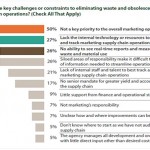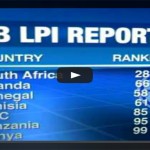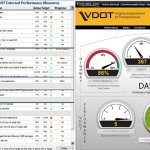Measuring Your Way to Success in Procurement and Supply Management
“Measurement is the first step that leads to control and eventually to improvement.” – H. James Harrington, CEO of the Harrington Institute.
Across the years, companies have traditionally and exclusively measured their success in terms of financial achievements. In the rapidly emerging business world it appeared the need for a much broader range of measures, in order to keep companies and organizations on track into achieving their goals. This is how the fulminating interest in dashboards, scorecards and KPIs can be explained, and Procurement and Supply Management is no different.
Define and measure progress with KPIs!
Key Performance Indicators, or KPIs, are basically quantifiable measurements, agreed to beforehand, that reflect the critical success factors of an organization. They help a company define and measure progress toward organizational goals.
The KPI Institute is the global authority on KPI research and education and it has a database of more than 20.000 different types of KPIs from all functional areas, including Procurement/Purchasing KPIs and Supply Chain Management KPIs.
Founder and CEO Aurel Brudan, quoted by procurementleaders.com suggests: “A good approach for procurement departments would be to start with analysing the corporate strategy and the corporate goals and establishing their own plan – a strategic procurement plan or a business plan for the department”.
Specific tools – dashboards and scorecards
Dashboards are instruments that lead organizations towards a more efficient management of the operational processes, helping them in optimizing the progress and reaching their targets. Dashboards offer a strong and very structured data visualisation, which helps the people in charge in the process of gaining insights, observing trends, creating information and, finally, making legitimate decisions.
Regarding dashboards, here are some general Dos and Don’ts that should be taken into consideration:
Dos:
- Do use strong visualisation of data
- Do start with a spend dashboard to give instant visibility
- Do focus on existing data
- Do create classification structures
- Do use simple charts
Don’ts:
- Don’t use random graphics and colors
- Don’t assume that holding data within the organisation is the same as having information to hand
On the other hand, the scorecard is a performance management instrument used to measure the performance of companies and organisations against clearly established objectives. Scorecard systems can be used in two ways. First, as an operational control tool, the focus is on monitoring the progress towards organizational targets. Secondly, as a strategic management tool, the scorecard is integrated into the overall Business Performance Management cycle of the organization.
Even more good practices: Incentivisation
Incentivisation is a term proposed by CIPS (Chartered Institute of Purchasing & Supply), used to align the motivations of the client with the supplier and vice-versa, so that the supplier is stimulated to improve their performance towards the client’s benefit.
The benefits of incentivisation highlighted by CIPS include both actors.
From the buyer’s point of view:
- Lower cost
- Earlier delivery leading to an earlier revenue stream
- Improved quality or safety
- Greater certainties regarding delivery time, cost and/or quality
From the supplier’s point of view:
- Increased revenues or faster payment
- Better reputation
- Possibly longer relationships with the buyer
- Less time spent on contractual disputes
CIPS believes that successful incentivisation requires closer and more detailed dialogue between the buyer and supplier in the pre-contract stage and during post-contract management. The Institute also believes that KPIs are fundamental to successful incentivisation, as “they are measures of business critical deliverables”.
References:
- Andrew Sawyers, “Measure Success. And Failure”, 2013
- Dashboards and KPIs
- Chartered Institute of Purchasing & Supply, ”CIPS Positions on Practice P&SM: Incentivisation”, 2012

Tags: Dashboard, Procurement performance, Supply Chain Performance, Theory






